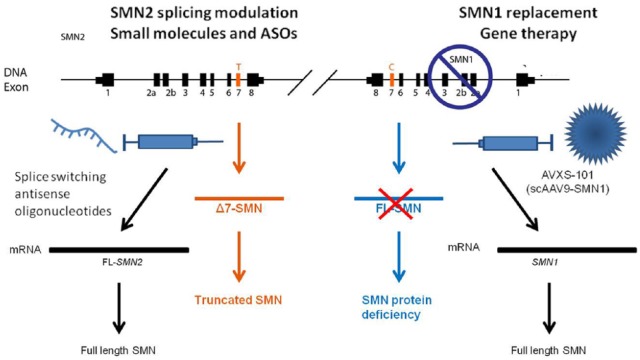Figure 1.
Genetics and therapeutic developments of spinal muscular atrophy (SMA).
SMA is caused by mutations, in the survival motor neuron 1 (SMN1) gene that mainly produces full-length SMN that is essential for motor neurons (below right). The human genome harbours a paralogous SMN1 gene, SMN2 (on the left), that differs only by a few nucleotides, and in particular by a C to T transition in exon 7. This base change causes the skipping of exon 7 in most SMN2 transcripts and generates a truncated unstable protein (SMNΔ7) with low levels (approximately 10%) of full-length, functional SMN protein produced (below left). Increasing the full-length SMN protein levels by promoting the inclusion of exon 7 in SMN2 mRNA, that is, with oligonucleotides (on the left) or transferring a wild-type copy of SMN1 through gene therapy (on the right), represents a promising therapeutic approach for SMA. ASO, antisense oligonucleotide.

